How to Install a Shelf with Brackets
How to put up a shelf
Adding new shelves is a great way of adding more storage space to a room as well as being able to show off your prized possessions and accessories such as pictures, books or trinkets.
There is a whole range of shelves out there:

Here’s how to put them up.
First up some technical language you may or may not have heard - Studs:
These are basically part of the framework for a stud wall, these are the vertical timber lengths that you usually use to attach your shelf to. the pieces of timber are then usually covered in ply board and then plastered. You can tell of a wall is a stud wall or brick wall by giving the wall a little knock - if it sounds 'hollow' it is usually a stud wall. If you are met with a thud, you can assume it is a brick wall.
If you have a stud wall - before drilling, hammering or putting a screw into a wall, you'll need to check it's safe with a stud detector (also known as a multi-purpose digital detector) as it will detect any wires or pipes that you might inadvertently hit.
They’re super simple to use and will give you a heads up if there are any pipes, cables or studs where you’re planning to hang your shelf. All you do is run the device over the surface area and it will detect any hazards.
Masonry walls which are simply walls made from bricks and mortar - you'll need a hammer-action drill with a masonry bit. You’ll also need at least 50 mm screws and wall (also known as a raw) plugs to go through the plaster and into the wall behind.
For stud partition walls, the screws need to go directly into the timber studs.
For heavy loads you'll need longer screws to support the weight we recommend going for about 50mm screws
The screws should also be the heaviest gauge (that's the thickness) that the holes in the bracket will take.
Note: All Acumen Collection shelves are sent with the correct fixings for your wall and shelf type
Here's a list of the things you will need:
- A stud detector
- A spirit level
- A drill - opt for a hammer drill for masonry walls
- Drill bits - choose masonry bits if drilling into masonry walls, or multi bits if drilling into other surfaces
- A screwdriver
- A shelf (check out our beautiful range of shelves HERE)
- Brackets
- Screws to suit your brackets
- Raw plugs
- Small screws for fixing the shelf to the brackets (these should be shorter than the depth of the shelf)
- A pencil
Step 1
Make sure you check the are behind the wall is free of any cables or pipes using your stud detector. Then hold your shelf against the wall and make a mark where you’d like it to go.
Then, make a mark where you want the first bracket to go, and then measure the distance and mark where you want the second bracket to go.
Use a spirit level to check your pencil marks are straight so you don't end up with a wonky shelf.
Step 2
Hold the first bracket up to your pencil mark for your first bracket and again check it's straight and make a pencil mark on the wall through the holes in the bracket this is to indicate where you will drill later.
Do the same again for the second bracket, and any other brackets you may have
If you have more than two brackets, just make sure they are equal distance away from the outer brackets.
Step 3
Drill into the wall to make a pilot hole and screw the brackets into place (if you have a masonry wall, use raw plugs).
Lay the shelf across and make a mark through the holes in the brackets for the fixing screws underneath it.
Then, drill pilot holes on the bottom of the shelf for the short screws - make sure you only make shallow holes though as you do not want to go through to the other side.
Put the shelf back up and then carefully screw in the bottom screws.
We hope you found this post useful and if you have any questions we are happy to help








Leave a comment